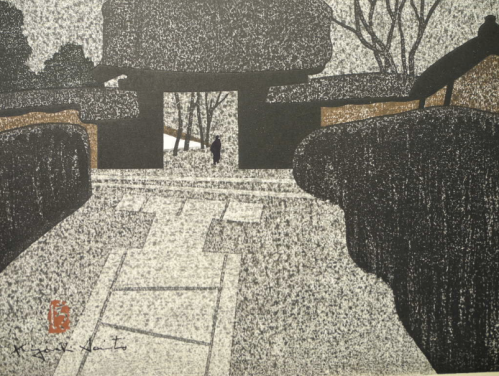In just a few days my husband and I leave home once again for Oaxaca, having visited just last year and decided it’s the kind of place we want to spend more time. Slow time, slow food, slow reading, slow walking…time to slow down in general. Oaxaca has many plazas with many benches – great places for slow listening (to very fast music, sometimes) and quiet watching. Last year we had just over a week at a nice B&B, and we experienced the Day of the Dead celebrations; this time around, we’re renting an apartment of our own (with kitchen!) and staying for a month, outside the real tourist season in order to get a better feel for what the town is like for the locals. When we go to the market now and see all that delicious fresh fruit, bread, vegetables – we can buy what we want and cook it up back at the apartment. Time to give different moles a try.
A friend asked me whether I would be doing any writing while in Oaxaca, and I wasn’t sure what to answer – yes, no, maybe? One thing I do know: I’m going to open myself, Diane Ackerman-style, to all the sensory input I can – sights, smells, textures, sounds and tastes (especially tastes – yes!)
Sights – the colors in the markets: flowers, fruit, vegetables, bread…
and the spectacular sky, whether stormy or bright…like this view from Monte Alban…
Smells – a cup of hot champurrado, especially sipped from a clay or greenware cup made in Atzompa (close your eyes and think steaming milk, corn flour, chocolate, cinnamon, vanilla, anise seed, plus the wet ceramic smell of the cup) and the ripe guavas in the markets(so sweet and pervasive, it can make you giddy)…
Textures – the soft cotton weavings, the hard rock walls, the delicate petals of a squash blossom…
Tastes – so many! Moles of every color (coloradito, negro, verde, chichilo, amarillo – here’s a recipe from Rick Bayless), tlayudas, tamales, jugos, pan dulce, pipian, and tomatoes that really taste like tomatoes…
Sounds – birds in the trees, danzon music at the Zocalo every Wednesday
Watch this wonderful video of a midnight concert in Tlacochahuaya
and this video of the amazing organ in the church there)….
Seems to me that writing which is not grounded in the senses is writing that becomes slack, abstract and dull. So I’ll let my five senses push me to write in Oaxaca. Plus one more: the sense of wonder. Can’t write without that.
Maybe I’ll be able to put those six senses together on a metate and work them, work them, work them…into a story.






































